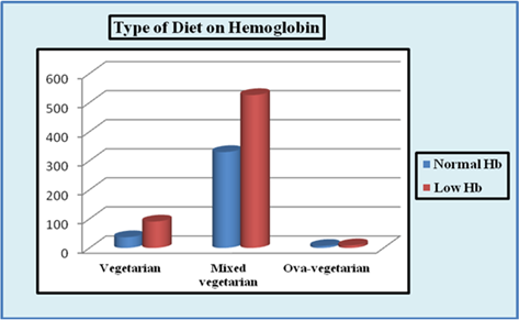Abstract
According to WHO, the prevalence of anemia is highest in South Asia, and India has the maximum prevalence of anemia among the South Asian countries. Anemia is major concern in developing countries like India. Thus, the present study explored the dietary factors influencing hemoglobin levels among college students. Adopting stratified and simple random sampling technique, this study is showed at 3 Arts and Science Colleges situated in North Chennai. This study is directed among 1000 students in the age group of 19 to 22 years. Interview schedule was used for collection of the details regarding the background information and eating habits of the participants. Biochemical tests are the most objective and sensitive measures of nutritional status. In the present study, hemoglobin is evaluated using Drabkin Method. The attained particulars are oblique and arrived into Microsoft excel. The oblique raw data are exposed to numerical study utilizing Statistical Package for Social Science (SPSS) version 20.0. Hemoglobin levels of the participants were correlated with dietary habits. The prevalence of anemia was more among 19 years (73.4%), followed by 65% in 20 years, 54.6% in 21 years and 46% in 22 years. Hostel dwellers were more prone to anemia than the students resided with the parents, friends and relatives. Students residing at hostel tend to have a poor eating habit leading to low hemoglobin levels. Vegetarians are more prone to anemia when compared to mixed diet consumers and ova- vegetarians.
Full text article
Authors

This work is licensed under a Creative Commons Attribution-NonCommercial-NoDerivatives 4.0 International License.

